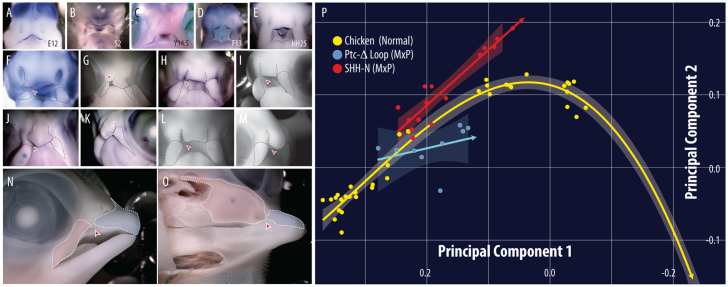Fig. 3.
Amniote sonic hedgehog (Shh) is similarly expressed at the time of fusion and altered signaling increases the likelihood of primary palatal clefts. Shh expression in (A) hamster (E12) (Theiler, 1989), (B) snake (stage 2) (Boback et al., 2012), (C) turtle (Y14.5) (Yntema, 1968), (D) alligator (F13) (Ferguson, 1985) and (E) chicken (HH25) (Hamburger and Hamilton, 1951). (F,G) Electroporation of Ptc-Δ-loop into the chicken maxillary alters prominence shape/size (right) relative to the control side (left) from 24 to 96 hours post-treatment and induces a primary palatal cleft (red arrowheads). Implantation of SHH-N into either the maxilla (H-K,N-O) or frontonasal region (L,M) expands the prominence and induces a cleft (red arrowheads). (P) Experimental trajectories deviate from normal into the morphospace predicted to induce a cleft (shading=95% confidence interval). Although performed on one side, we would predict that treatment on both sides would lead to a bilateral clefting phenotype.

